Podcast 321: Running Pipes in a Block House, Local Lumber, and Air-Sealing a Garrison Colonial
Rob, Brian, and Patrick hear from listeners about lead poisoning and favorite tools before taking questions on making room in block walls for pipes, ducts, and wires; local logging; and how to air-seal overhanging floors.
Follow the Fine Homebuilding Podcast on your favorite app. Subscribe now and don’t miss an episode:
 |
 |
Help us make better episodes and enter for a chance to win an FHB Podcast T-shirt:
www.finehomebuilding.com/podcastsurvey
Andrew talks about the risks of lead poisoning. Dr. Lee says higher indoor humidity helps filter viruses. Jeff shares some favorite tools. Jerry asks for the best way to run mechanicals in a house built of CMUs. Phil asks about the value of remodeler certifications. Michael makes a pitch for local lumber and Jim seeks the best way to air-seal the floor in his garrison colonial.
Editor Updates:
- Rob’s bicycle
- Brian’s home search
- Jeff’s little satisfying projects
- Patrick’s home networking
 |
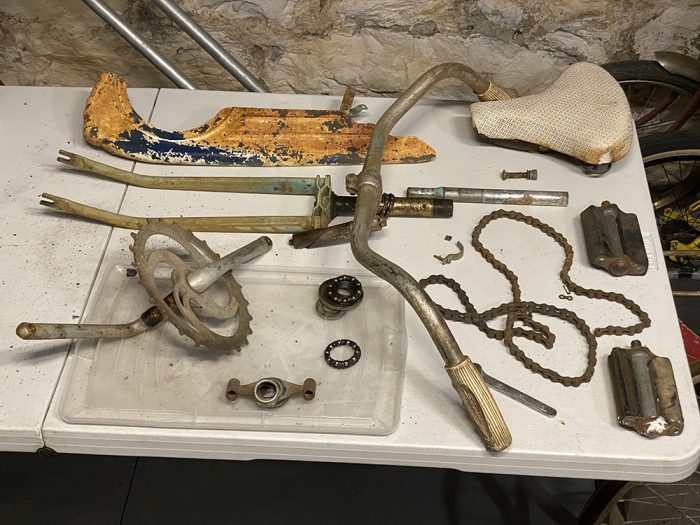 |
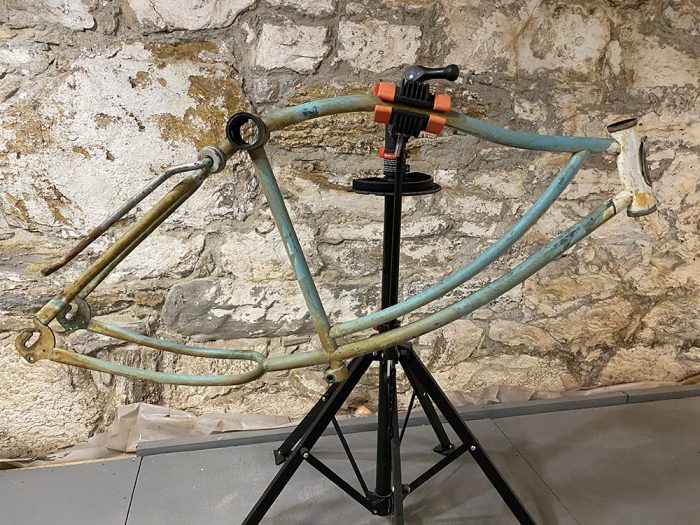 |
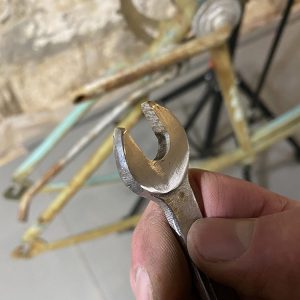 |
 |
Listener Feedback 1:
Andrew writes: Hey guys, In episode 315 you referred to an article about the Home Depot’s being fined 40 million dollars for lead paint safety violations. I thought I would share my experience with lead. One of our four children tested “high” for lead in 2020. It was like the sky was falling. The system was “awakened”, my child was put in a monitoring program, and specialists were notified. Naturally my wife was very concerned, so I started researching. The child’s lead test came back as 10, how bad is that you ask? Treatment isn’t considered until the levels are 45. I had the opportunity to speak with one of the specialists. She has been doing lead monitoring and “treatment” in children for 30 years. What’s done for “high” lead levels you may ask? The child is placed on iron supplements, and you’re told to give them plenty of citrus and milk… After all the scare tactics I was expecting something more invasive. The specialist said when the levels get too high (above 45) they can clean the blood through something similar to dialysis. As we live in Iowa with a very old housing stock I wondered how bad is this crisis. “How often does a child test that high?” I asked thinking it must be in the thousands or at least hundreds per year. In 30 blanking years of doing lead testing and “treatment” seeing thousands of children she has known of exactly one case of a child being treated for lead. Other than that they tell you to eat well and get tested every six months. I’m sure there are some horror stories about children with lead poisoning, but those percentages are incredibly low. Our time and resources would be far better spent on other problems like cancer, diabetes, car crashes, etc. Thank you.
Related Links:
Listener Feedback 2:
Dr. Lee writes: Hello FHB podcast crew, I appreciate your engaging and information discussions. Particularly, the mention of the importance of interior humidity levels on one’s health from show #315.
It is worth mentioning that there is another very important reason that interior humidity should not be too low (ideal range is 30%-50%). That is, the ability to effectively remove pathogens from the air by filtration. Virus particles don’t have wings to fly on their own…so they hitch a ride on airborne respiratory droplets. When the humidity is too low, the size of the combined respiratory droplet/virus complex can be too small for effective filtration – in other words, depending on one’s filter efficacy, it can require too many passes to filter. Most filters in residential and commercial environments are somewhere between MERV 7 and MERV 13; most of us don’t have blower motors robust enough to push the air through a MERV 20 (HEPA by definition) filter.
See this link: https://www.epa.gov/indoor-air-quality-iaq/what-merv-rating-1
What I have done in my office is upgrade to the highest rated filter my blower motors will allow (MERV 13), added UV lights in the ducts, only run the office HVAC when the thermostats call for conditioned air (to avoid unnecessary mixing of air between rooms), and supplement with individual room hyper-HEPA (100x more efficacious than HEPA) air filters running continuously. See IQAir.com – no financial interest.
I have also published 4 videos on indoor air quality on my youtube channel if anyone needs a cure for insomnia. Thanks again and keep up the good work.
P.S. Don’t use bungee cords
Related Links:
Listener Feedback 3:
Jeff from Bainbridge Island, WA writes: The tools that have really changed my remodeling/maintenance are:
1. Oscillating tool
2. Drywall hoist
3. Battery-powered chain saw and pole chain saw
4. Bore scope
5. LED head lamp
Related Links:
- Best New Construction Tools
- Podcast 263: Basic Tools, Wet Walls, and Is the Deck Stacked Against DIY?
Question 1: What’s the safest way to insulate my house’s block walls?
Jerry, of Dexter Builders writes: Hi FHB crew, I’m new-ish to the building industry. I was a mostly self-taught DIY-er until I fell into a building maintenance roll, then worked as an assistant carpenter and now I’m a project manager for a design/build company in Michigan. The podcast has been a great addition to my commute and while trucking from one jobsite to the next. I’ve mostly got my feet under me, but we recently started a whole house remodel on an interesting house. It was built in the 1950’s. The main floor consists of foundation walls and concrete slab, sort of like a split level. The walls are block from the slab to the top of the second floor. The blocks are 3” tall by 12” wide and 8” deep. The existing house had furring strips nailed right to the block and drywall/plaster on that with no insulation to speak of. The trusses look hand-built on site. As part of our renovation we have removed all of the existing drywall and plaster and are building 2×4 walls on the interior side of the block to give space for outlets, switches, and forced air ductwork. The only wall cavities in the house are above the front door (on the lower level and all the way up the gable end wall), and in the top 1’ of wall on the second floor. The inspectors have told us that we only need to insulate wall cavities that we expose during demolition, so basically one 8’ wall section and then the header space on the second floor. By framing new walls on the inside of the block we have the opportunity to insulate more, but how? Some of my colleagues say we should foam it all. Some people have warned that if we insulate too well, the block will hold moisture and during the winter will stay cold, freeze and deteriorate. One thought is to use a relatively basic insulation like fiberglass that will help hold heat in but would still allow some heat to dry the block to the outside. Am I thinking about this wrong? Is this a common problem? It seems strange in our area, but maybe this is a common assembly in other areas or in commercial buildings. What is the best way to handle this?
I really appreciate your time, and all of the long conversations you have for our delight!
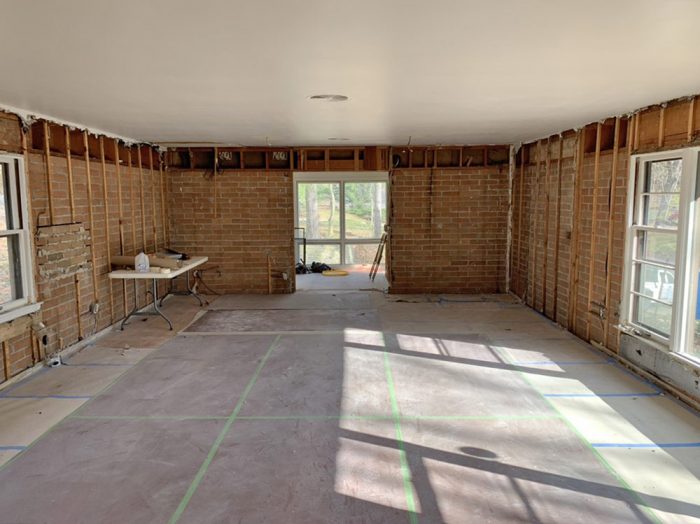 |
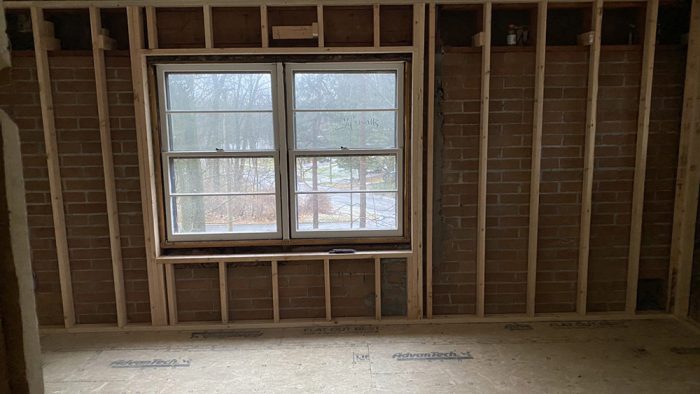 |
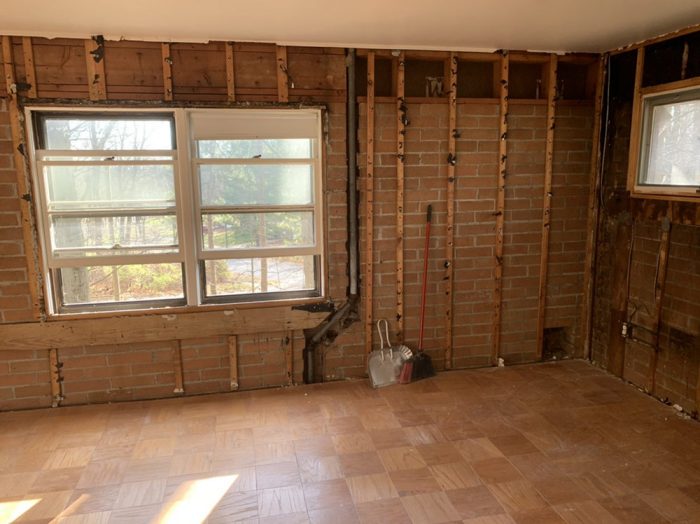 |
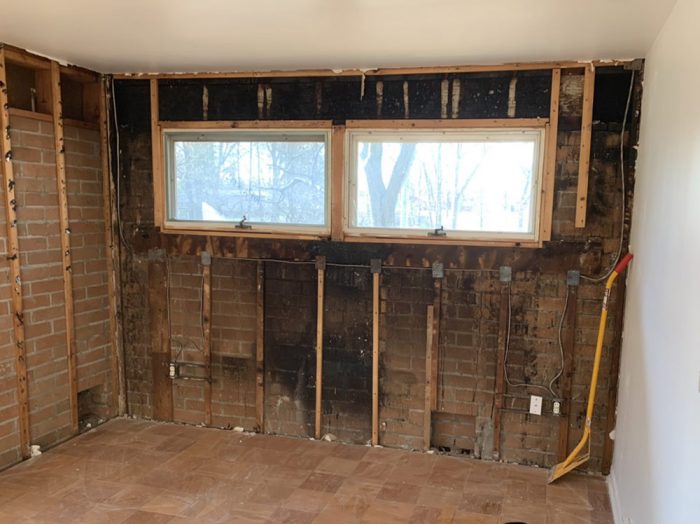 |
Related Links:
Question 2: Will professional certifications and titles help you get business?
Phil of Veenstra Construction writes, Dear Patrick et al., I’m a kitchen and bath remodeler and I’m wondering what your thoughts are on certifications such as CAPS (Certified Aging-in-Place Specialist), CKBD (Certified Kitchen and Bath Designer), NAHB member, etc. Do they help contractors get jobs? Do potential clients feel better if a contractor has letters after their name on their business card since we are not accredited like engineers and architects?
I look forward to your comments.
Related Links:
- NAHB Professional Designations
- PHIUS Certified Passive House Builder Training
- LEED Professional Credentials
Question 3: Do you think locally-harvested wood products are worth a higher price?
Michael writes, Hey Team, After listening to your podcast for over a year, my wife and I decided to do the smart thing and buy a 229 year old house in the Berkshires. Surprisingly, although it’s been several months, I still don’t have any issues to write in to you about. Yes the porch is sagging, and we have no idea what’s under the kitchen floor, but it seems to have had a history of good care, and the projects have been mostly dreaming about and preparing for the future, not fixing past renovations.
I’m writing to you today about my somewhat unique hobby, which is low-impact logging with a single horse. I often joke that I’m one of the few ‘hobby loggers’ around, but I love the work and I think there’s a real place for it, even in modern times. Just like we don’t call someone anachronistic when they use a shovel instead of a excavator to dig a hole, a single horse or horse team can be the exact right tool for certain jobs (although I’ll be the first to admit that some holes DO call for a excavator). This admittedly unique passion has had me thinking for the past years about the importance of sourcing wood locally whenever possible, a topic you’ve skirted up against several times, but have never addressed directly. When we buy locally we’re supporting our communities directly, and we’re not buying into the ‘illusion of preservation’, where we just choose to place the resource burden on some far-away, unseen (and often less regulated) market. I’m curious what demand (if any) you see in the market for local wood, and why or why not. Patrick, I would love it if you invited a forester and/or logger (two different things!) onto your pro-talk series to talk about the topic. I’d be happy to recommend some great folks. There is also a series of webinars coming up from the amazing people at Northern Woodlands on the topic that I would highly recommend: northernwoodlands.org/events/local-wood-webinars
And finally, the subject of carbon storage & sequestration seems to come up often, and every time it does I’m reminded of this excellent publication by UMass on the topic. Please take a look — it answers a lot of the questions that you inevitably seem to have! Many thanks for the hours (and hours and hours) of great listening.
 |
 |
Related Links:
- @hilltownhorselogging (on Instagram)
- Harvesting your own lumber
Question 4: How should I insulate and air-seal the overhangs on a garrison-style home?
Jim Collins, Landscape Architect in Burlington, (on ProTalk Podcast #282) writes,
Looking for some insight from the Energy saving masters… I have a 1970’s side split in Burlington, Ontario that had an additional story added on in the early 90’s. We have been in the home for just over 3 years, and I know it has its share of bad building practices. Did I mention ductwork running through the attic? Yes… I know.
My question relates to the garrison style overhangs of the second story, and at the same time some of the pop-out window and cantilevered portions of the main floor below. The siding and soffits were just redone before we bought the home, so I would like to do some delicate removal of the soffit aluminum in the spring and do a good air sealing and insulation job. As I do not want to add the cost of additional siding, etc. I would like to cut & cobble between the joists with EPS foam, with caulking or canned spray foam edges on the underside of the subfloor, then supplement with rockwool. Suggestions to keep the rockwool in place after between the joists? I guess I could staple a drainable housewrap across it all before I reinstall the soffit aluminum? There may be an old plywood soffit under the aluminum – I guess I should replace that instead(?), and then reinstall the aluminum soffit.
My question is the detailing of the return where the cantilevered joists meet the top plate. Do I block these openings with EPS as well? Double layer?
Also a common EPS available here is Durafoam by Plastifab – foil on the back and a thin plastic on the front. Labelled as 0.5 perm. Any risk in doing double layers? Does moisture trap between the layers?
Thanks again for the insight.
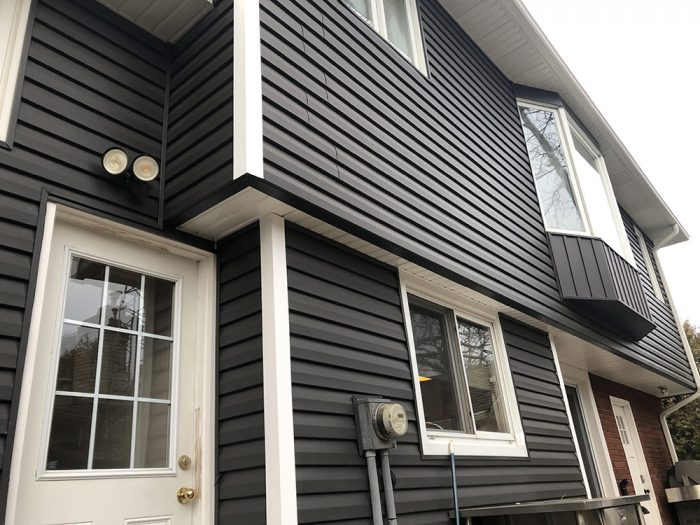 |
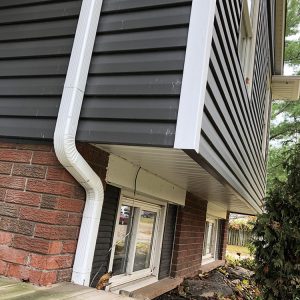 |
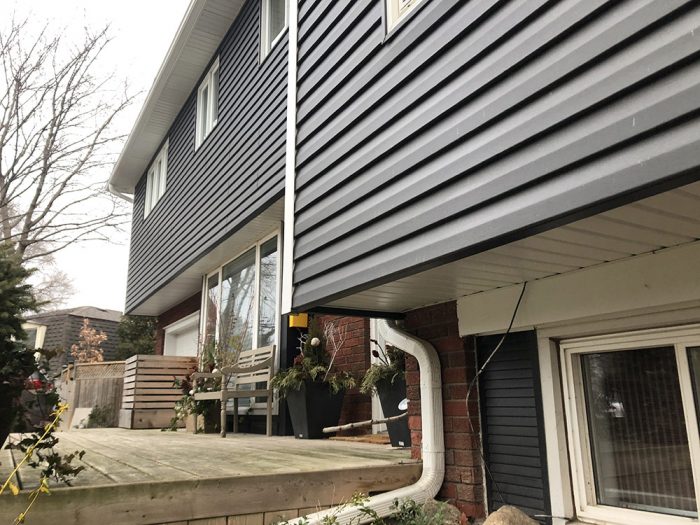 |
Related Links:
END NOTES:
Also: Check out our Webinars:


Visit the Taunton Store • Magazine Index • Online Archive • Our First Issues • All Access
Help us make better episodes and enter for a chance to win an FHB Podcast T-shirt: www.finehomebuilding.com/podcastsurvey
If you have any questions you would like us to dig into for a future show, shoot an email our way: [email protected].
If we use your question we’ll send you a FHB Podcast sticker!
FHB Podcast T-shirts!
Represent your favorite podcast! Available in several styles and colors. Made from 100% cotton. Find the Podcast t-shirt and more cool products in the Fine Homebuilding Store.
Fine Homebuilding podcast listeners can now get 20% off anything in the Taunton store, including Insulate & Weatherize.
Use the discount code FHBPODCAST to take advantage of this special offer.
We hope you will take advantage of a great offer for our podcast listeners: A special 20% off the discounted rate to subscribe to the Fine Homebuilding print magazine. That link goes to finehomebuilding.com/podoffer.
The show is driven by our listeners, so please subscribe and rate us on iTunes or Google Play, and if you have any questions you would like us to dig into for a future show, shoot an email our way: [email protected]. Also, be sure to follow Fine Homebuilding on Instagram, and “like” us on Facebook. Note that you can watch the show above, or on YouTube at the Fine Homebuilding YouTube Channel.
The Fine Homebuilding Podcast embodies Fine Homebuilding magazine’s commitment to the preservation of craftsmanship and the advancement of home performance in residential construction. The show is an informal but vigorous conversation about the techniques and principles that allow listeners to master their design and building challenges.
Other related links
-
- All FHB podcast show notes: FineHomebuilding.com/podcast.
- #KeepCraftAlive T-shirts and hats support scholarships for building trades students. So order some gear at KeepCraftAlive.org.
- The direct link to the online store is here.
































